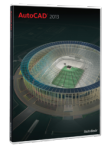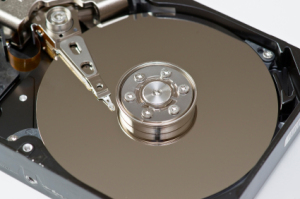Read More
Topics:
Workstations,
Autodesk,
RAM,
Hardware,
Hard Drive,
AutoCAD,
Processors,
Operating Systems,
RAID,
Upgrade,
Video Cards,
Operating System,
Windows,
CAD
We started this series by looking at our current hardware and if it’s up for the job. Next, let’s examine if your hardware will still work with your future needs, which may include going from 2D to 3D or adding cloud computing and mobile devices to the mix.
2D vs. 3D
Read More
Topics:
Workstations,
Autodesk,
Hardware,
AutoCAD,
Operating Systems,
Upgrade,
Operating System,
Windows,
CAD
Autodesk releases a new version of its flagship design software AutoCAD every year, as it has since AutoCAD 2004 came out in 2003. This yearly cycle poses a dilemma for CAD and IT managers because new software may require new hardware. Before you install AutoCAD 2013, you need to know if your current hardware can handle it. Budgets are tight (when aren't they?), and production cannot stop.
Read More
Topics:
Workstations,
Autodesk,
Hardware,
AutoCAD,
Operating Systems,
Upgrade,
Operating System,
Windows,
CAD
The old adage about getting a hard drive at least twice as big as you think you’ll need still holds true.
The longtime, tried-and-true hard drive remains the backbone of a workstation's storage subsystem, but a new breed of solid-state technology is pushing its limits. Although they share the same basic technology as their ancestors, today's drives are much bigger, faster, and cheaper. Traditional workstation hard-disk drives (HDDs) primarily come in a 3.5" form factor, supporting SATA or SA-SCSI standards.
SATA Drives
Read More
Topics:
Workstations,
Hardware,
Hard Drive,
CAD
In Part 3 of this series, I showed you some of the collaboration functionality of Autodesk 360. We are now going to look at how we can synchronize our documents and drawings using Autodesk 360, using a fixed location (PC on a network) and a mobile location (iPad on a remote site with Wi-Fi), like in Part 3.
Read More
Topics:
Workstations,
Autodesk,
Hardware,
Facilities Management,
AutoCAD,
Mobile Workstations,
Connectivity,
Laptops,
CAD
The most compelling reason to install multiple GPUs is to drive multiple high-resolution displays. The secret's out that "multi-mon" is the single best way to improve your productivity. Anyone who's gone to two displays (or three — or more!) will tell you they could never go back to one. And more graphics cards can display more pixels across more monitors.
Read More
Topics:
Workstations,
Hardware,
Displays,
Graphics Card,
GPU,
Graphics Cards,
Eyefinity,
AMD,
Video Cards,
Display,
CAD
A GPU manages how your computer graphics process and display and, thanks to parallel processing, is typically more efficient than a CPU. The GPUs that are best optimized for professional graphics-intensive applications, such as CAD, design visualization and analysis, are found in workstation caliber AMD FirePro and NVIDIA Quadro graphics cards.
Read More
Topics:
Workstations,
Hardware,
Graphics Card,
Processors,
GPU,
Graphics Cards,
AMD,
CAD
Where do you begin your quest for the right workstation? This particular hardware search should start with your software.
Read More
Topics:
Workstations,
Autodesk,
RAM,
Hardware,
Graphics Card,
Hard Drive,
Processors,
GPU,
Memory,
Graphics Cards,
AMD,
Connectivity,
Video Cards,
Intel,
CAD
AMD launched the AMD FirePro A300 Series Accelerated Processing Unit (APU) for entry-level and mainstream desktop workstations. Featuring AMD Eyefinity multi-display technology, the AMD FirePro A300 Series APUs are designed for CAD and media and entertainment (M&E) workflows.
Read More
Topics:
Workstations,
Hardware,
Displays,
Graphics Card,
Processors,
GPU,
Graphics Cards,
Eyefinity,
AMD,
Video Cards,
CAD













